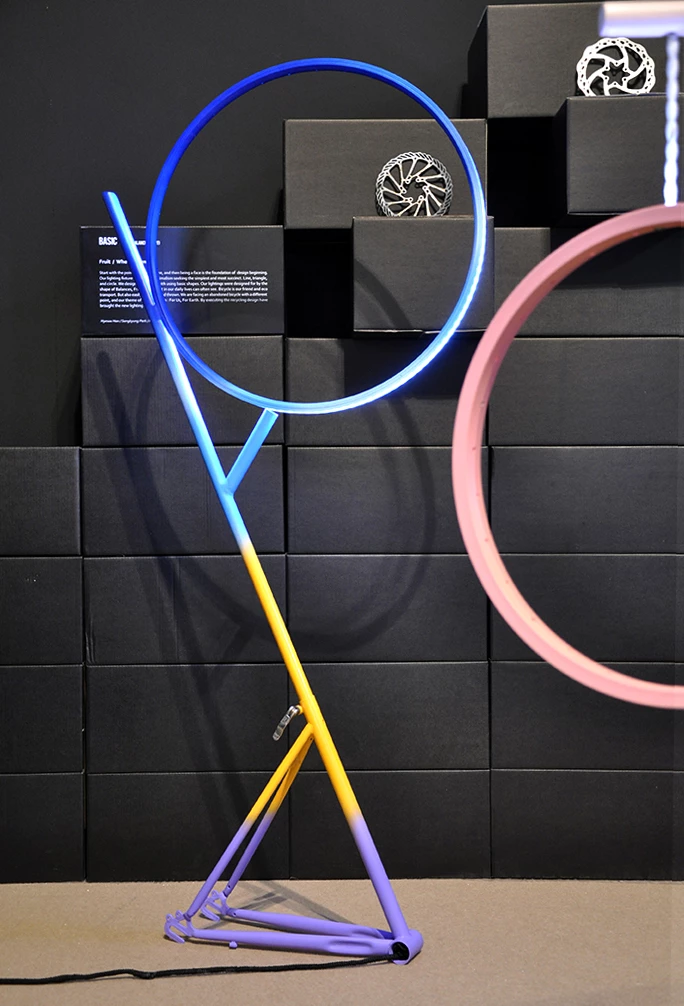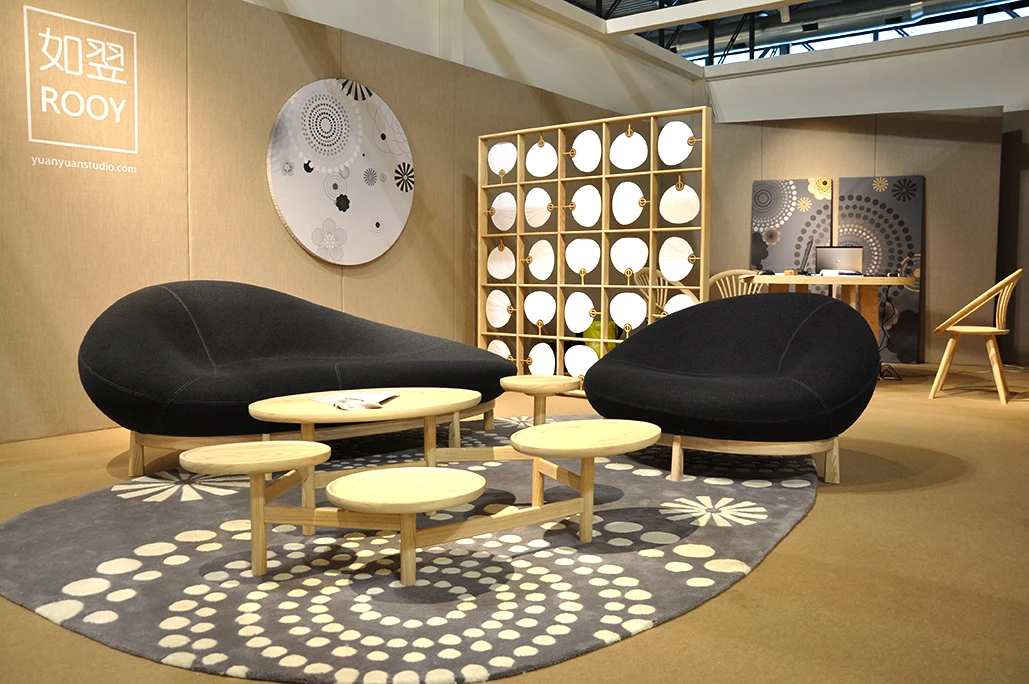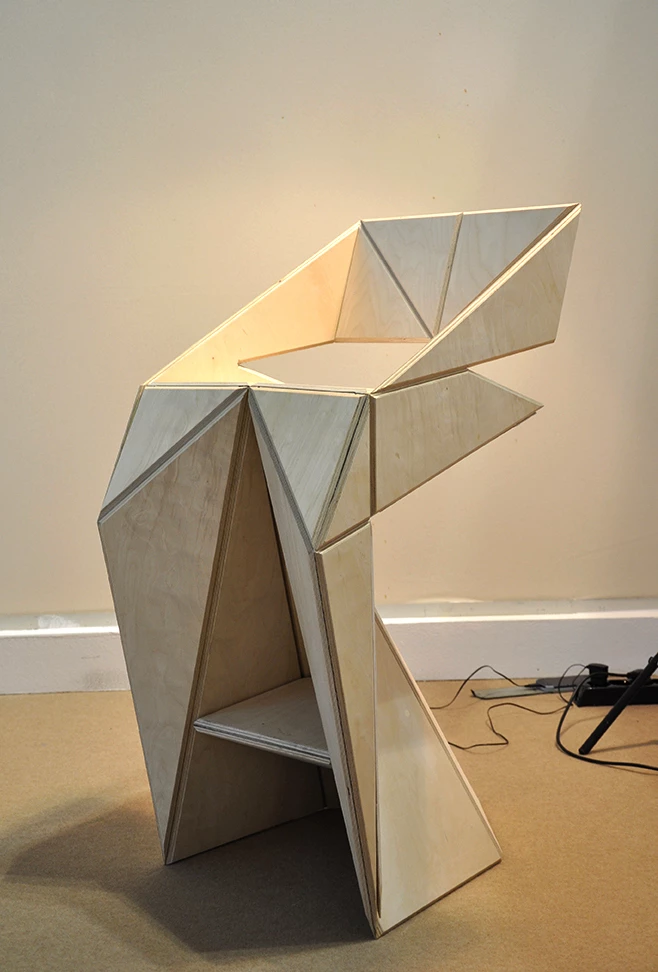Running alongside the Salone Internazionale del Mobile, the SaloneSatellite celebrated its 18th edition this year. Showcasing the work of 700 emerging young designers under the age of 35, and 18 international schools, the theme of this year's exhibition was "Pianeta vita" (Life planet). The show adopted the theme from this year's EXPO "Feeding the Planet, Energy for Life," which was expressed through various student installations and the presentation of unique projects specially created for the event. Here's a look at Gizmag's top picks from this year's SaloneSatellite.
DFM01 Concept by Triple Bottom Line
Created by Japanese sustainable designer Satoshi Yanagisawa, the DFM01 prototype is a fully-functional 3D-printed racing bicycle. The bike is made from carbon fiber and a series of 3D-printed titanium parts, which are created using titanium powder that is sintered together by a laser to produce each specific part. Each component takes about 70 to 80 hours to produce, which means it takes one to two weeks to print all the components for the bike.

"It's quite a unique process combining two completely different materials into one product, so it was quite a huge challenge," Satoshi Yanagisawa told Gizmag at the event. "The challenge was to make a real working prototype in the form of a racing bicycle and not just a concept or idea. We've already tested it with a semi-professional rider in Japan, who gave us some great feedback and luckily none of the parts broke up."
According to Yanagisawa, the DFM01 is the first working fully-3D-printed road racing bike in the world – although at least one company is already making partially 3D-printed models. He took around six to eight months to complete the project, all the while modifying and testing the individual elements along the way. His only challenge now is to test out how long the 3D-printed components will last.
"We know about welding and casting but no one knows the durability of sintered parts," said Yanagisawa. "We need to do more experimenting and work out what the tipping point is before the parts break, as we witnessed in our tests sometimes the metal parts gradually reduce and break off."

Welcome on Board by young designers from Latvia
Drawing inspiration from the local birch trees in Latvia, this group of young designers describes its project as a "tree of energy." The Lokal Boards team members, who are all riders themselves, handcrafted a series of sustainable long boards from locally-sourced birch wood. "The birch tree grows for 70 years, then it gets cut down and from its wood material we made 70 long boards, which is energy for 70 people," co-founder Alberts Vieglins told Gizmag during the SaloneSatellite. "It's birch nurture, you can be active, be happy and you don't get fat."
The Lokal Boards are available for purchase online starting from 85 Euro (US$96) each.

WAS Project by Hanyang University, School of Interior Architecture and Design
Students from Hanyang University in Seoul collaborated to present their WAS Project, which features a collection of furniture designs made from reclaimed materials. Upcycling old bicycle parts, the students presented an innovative collection which included the C-Wheel Light made from various bicycle parts from off the street; Top Flower Chair, featuring the re-use of bike seats and wheels; and the Basic light feature made from cleaned-up bike frames and wheels.
"The most important thing in this project is something old," said the student designers of the WAS Project. "Everything is born from the past. WAS Project not only converts waste materials into new materials but also integrates an existing identity of something into a core design identity or value of a new product."

SaloneSatellite Award
The exhibit also featured the SaloneSatellite Award, which aims to foster a conversation between young designers and established exhibitors at the Salone del Mobile.
This year's first prize went to Cloud Series Lamp by Xuberance Studio from China. The Cloud lamp collection was created using 3D printing technology, merging a traditional Chinese aesthetic with modern innovation. The second prize was awarded to Scott Haung from Taiwan, for his Dandelion Mirror. This project features an interactive mirror which responds with the viewer's facial movements. The third prize was awarded to Australian designer Viktor Legin, for his Balance Pendant lamp collection. The lamps adopts different positions by shifting a weight and can be used as a mobile sculpture.

Honorable Mentions were awarded to Documentary Design from Chile for its Mapuguaquèn Speakers Series, and German studio Out for Space for its Coat rack. The Mapuguaquèn speakers immediately caught our attention as an innovative and sustainable new design for household speakers. Each one is handcrafted using traditional pottery techniques and features an internal wireless audio technology.

To get a glimpse of all the other designs that were on display during this year's SaloneSatellite, be sure to check out the photo gallery.

































































